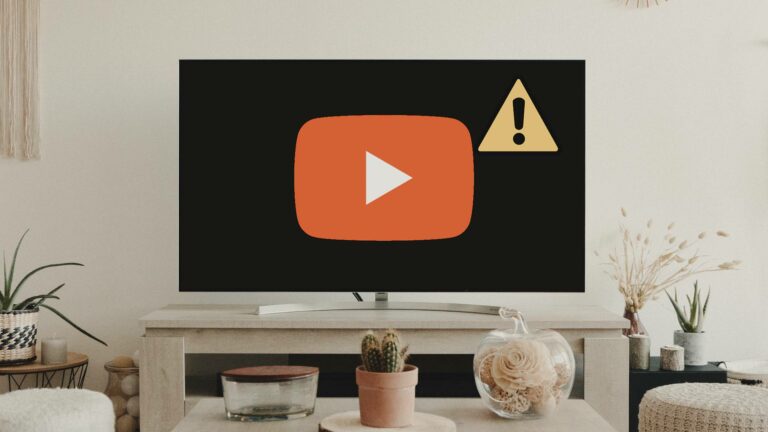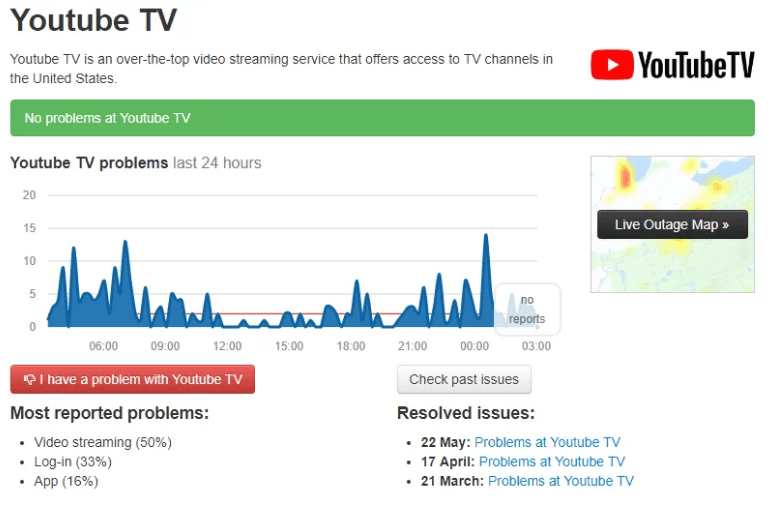YouTube TV has garnered a lot of attention as a popular streaming service, but it’s not without its hiccups. As more people cut the cord and turn to online platforms for their viewing needs, YouTube TV has faced several challenges. In this post, we’ll explore the current issues users are experiencing and what they mean for the future of streaming TV. Whether you’re a current subscriber or considering signing up, it’s essential to stay informed about these ongoing problems.
Common Problems Users Are Experiencing

While YouTube TV offers a vast selection of channels and an easy-to-use interface, users often encounter frustrating issues. Here’s a rundown of the most common problems reported:
- Streaming Quality Issues: Many users have complained about buffering or low-quality streams during peak viewing hours. This is particularly noticeable in high-definition content, which is essential for an enjoyable viewing experience.
- Account and Login Problems: Some subscribers face difficulty logging into their accounts or experience unexpected logouts. This can be especially inconvenient if you’re trying to catch up on your favorite show.
- App Crashes: YouTube TV’s app has a history of crashing on various devices, whether it’s smart TVs, streaming sticks, or mobile phones. It can be disheartening to deal with sudden interruptions, especially during live events.
- Limited DVR Features: Although YouTube TV offers a cloud DVR service, users have pointed out limitations like storage capacity and the inability to skip through commercials in recorded content. This can detract from the overall viewing experience.
- Channel Availability Variability: Channel availability can differ by region, which means some users might find their favorite channels missing. This inconsistency can be disappointing for those who rely on specific networks for their entertainment.
- Customer Support Response Times: Many users report long wait times when trying to resolve issues with YouTube TV’s customer support. In today’s fast-paced environment, quick and effective support is crucial.
Addressing these problems directly can help users make the most of their YouTube TV experience. While YouTube TV has potential, it’s essential for the service to continually adapt and respond to feedback to improve customer satisfaction. As more issues surface, it will be interesting to see how the platform evolves and enhances its capabilities for its users.
Also Read This: Are YouTube Ads Getting Worse
3. Identifying the Source of YouTube TV Issues

If you've found yourself frustrated with YouTube TV lately, you're not alone. Many users encounter various issues, from streaming problems to interface glitches. So, how do we identify what's causing these headaches? Let's break it down.
First, it's essential to understand that there can be several sources for YouTube TV problems. Here are some common culprits:
- Internet Connection: A slow or unreliable internet connection can lead to buffering, pixelation, or even an inability to load content. Checking your speed can provide immediate insight into whether this is the issue.
- Device Compatibility: YouTube TV isn't universally compatible with all devices. Check whether your streaming device, smart TV, or mobile device is supported and updated to the latest version.
- App Glitches: Sometimes, the YouTube TV app itself can experience bugs or glitches. This may happen after a recent update or due to compatibility issues with your device.
- Account Issues: Problems with your account setup, login credentials, or subscription status can also interfere with your streaming experience.
- Server Outages: Occasionally, YouTube TV can face server outages that affect many users simultaneously. Checking forums or social media can help determine if it's a widespread issue.
To effectively troubleshoot, you'll want to isolate the problem. Start by ruling out each source one by one. As you dig deeper, keep in mind that combining several factors might lead to more complicated issues. It's a bit like solving a mystery—every clue helps!
Also Read This: How to Check If a YouTube Channel Is Monetized: A Quick Guide
4. Steps to Troubleshoot YouTube TV Problems
If you've identified that your issues with YouTube TV aren't stemming from external factors, it’s time to dive into troubleshooting! Here’s a step-by-step guide to getting your streaming experience back on track:
- Check Your Internet Speed: Use an internet speed test to determine if you’re getting the bandwidth you need. YouTube TV recommends a minimum of 3 Mbps for standard definition and up to 25 Mbps for 4K streaming. If your speed is lower, consider resetting your modem or contacting your ISP.
- Restart Your Device: A simple restart can help resolve many issues. Turn off your streaming device or TV, unplug it for about 30 seconds, and then plug it back in and turn it on.
- Update the YouTube TV App: Ensure you have the latest version of the app installed. Visit your device's app store, check for updates, and download if necessary.
- Clear Cache Data: If you're on a smart TV or mobile device, clearing the app’s cache can help fix performance issues. Navigate to your device settings, find YouTube TV, and clear the cache.
- Sign Out and Back In: Sometimes, a refresh of your account data can help resolve issues. Sign out of the YouTube TV app and sign back in to see if that restores functionality.
- Check for Outages: Look online or check social media for any reports of current outages affecting YouTube TV. If it’s a widespread issue, you may have to wait it out.
- Contact YouTube TV Support: If all else fails, don’t hesitate to reach out to YouTube TV’s support team. They can provide detailed troubleshooting steps specific to your account and device.
Remember, troubleshooting can be a process of elimination. Take your time and approach the issues systematically. With a little patience, you’ll likely get back to enjoying your favorite shows in no time!
Also Read This: How Much Money Is 700K Views on YouTube? A Breakdown of Earnings
5. When to Contact YouTube TV Customer Support
Let's be honest, while YouTube TV is a fantastic service offering a wide range of channels and features, issues can and do arise. Whether it's a frustrating buffering problem or a billing discrepancy, knowing when to reach out to customer support can save you a lot of time and hassle. Here are some instances when you should definitely consider contacting YouTube TV customer support:
- Streaming Issues: If you find that certain channels aren't working or you're experiencing frequent buffering, this is a solid reason to reach out. It could be a network issue on their end, and they might have tips for troubleshooting on your end as well.
- Login Problems: Can't log into your account? Whether it's a forgotten password or an account lockout, YouTube TV support can help you regain access quickly.
- Billing Confusion: If you notice unexpected charges or fees in your billing statement, don't hesitate to contact customer service for clarification. They can provide a breakdown of your charges and help resolve any discrepancies.
- Device Compatibility Issues: Struggling to get YouTube TV working on a new device? Reach out for assistance to ensure you're set up correctly.
- Feature Accessibility: If you've heard about new features but can't seem to access them, customer support can help clarify whether they're available in your region or account type.
When you do contact customer support, be prepared with relevant information such as your account details, any error messages you’ve received, and a clear description of the problem. This will help them assist you more effectively. You can reach out via the YouTube TV app or their official website, where you'll find various options for customer support, including chat and email support.
6. Conclusion: Staying Updated on YouTube TV Status
As technology rapidly evolves, so do streaming services like YouTube TV. It's essential to stay informed about current issues and updates that may affect your viewing experience. Here’s a few tips on how to keep yourself in the loop:
- Follow Official Channels: YouTube TV has social media accounts where they post updates regarding service outages, new features, and troubleshooting tips. Following them on platforms like Twitter or Facebook can be beneficial.
- Check Online Forums and Communities: Places like Reddit or dedicated YouTube TV forums can provide real-time updates and discussions about ongoing issues. Often other users will share workarounds or solutions that might not come from official sources.
- Subscribe to Newsletters: If YouTube TV offers a newsletter, consider subscribing. This way, you'll receive direct updates about service changes, promotions, and tips right in your inbox.
- Regularly Check the FAQ Section: YouTube TV's official FAQ page is frequently updated with common issues and resolutions. Checking this page can save you time if you're facing a frequently occurring problem.
Lastly, remember that the streaming landscape is always changing. Keeping your finger on the pulse with news and updates will not only enhance your viewing experience but also ensure you get the best value for your subscription. So, stay connected and enjoy all that YouTube TV has to offer!
 admin
admin








